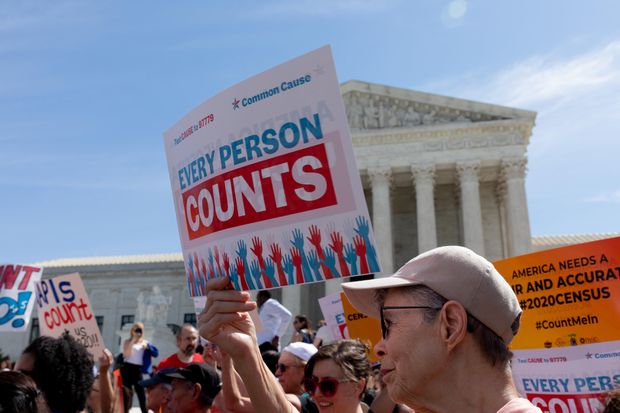The U.S. Supreme Court let President Trump’s administration end the census count more than two weeks early, dealing a blow to civil rights groups that said minorities will be undercounted as a result.
The justices, without explanation, blocked a federal trial court ruling that had required the decennial count to continue through the end of October.
Justice Sonia Sotomayor dissented.
The administration said it needs to stop counting now so it can meet at Dec. 31 statutory deadline for Commerce Secretary Wilbur Ross to send a report to the president.
The administration asked the Supreme Court to intervene after being rejected by a San Francisco-based federal appeals court.
A census undercount would mean that affected groups get less political representation and fewer federal dollars than they otherwise could.
The Supreme Court is separately considering how to handle Trump’s bid to exclude undocumented immigrants from the count.
The justices are likely to say later this month whether they will hear arguments on Trump’s appeal.
The Census Bureau, long the gold standard for nonpartisan probity and statistical rigor in the federal government, will close the most imperiled and politicized population count in memory with two huge issues in dispute.
The first is the overall accuracy of a hurried count, buffeted by the coronavirus on the one hand and partisan interventions by the White House on the other.
The second is whether the use of that count will result in figures for congressional reapportionment shaped by political considerations instead of an objective count of all the nation’s residents as the Constitution requires.
For all its problems, the Census Bureau has mounted a dogged effort in recent days to fill in some of the count’s many gaps.
It has plucked more than 16,000 census takers from places where it considers the count completed and dispatched them to states where the response is lagging, notably in the Deep South.
The deployment is well above those of past censuses, and appears to reflect the bureau’s use of its new digital capabilities to post workers where they are most needed.
But it comes after the bureau has curtailed counts in many areas, despite a federal court order to continue them until the end of October, and a barrage of complaints by census takers and others that tallies are inaccurate and incomplete.
The most consequential decision appears yet to come.
For decades, the Census Bureau has calculated the allocation of seats in the House of Representatives with its fresh population totals.
The process has been walled off from partisan influence, its methodology set by law and its results available for anyone to double-check.
But this time, court documents indicate that, as one Justice Department legal filing stated, the bureau “will provide the President with information” for the calculations.
That has further fueled fears that partisan politics will taint a reapportionment process that the White House already has vowed to recast by removing unauthorized immigrants from state-by-state population totals.
Analysts say that probably would increase Republican ranks both in the House and in state legislatures.
